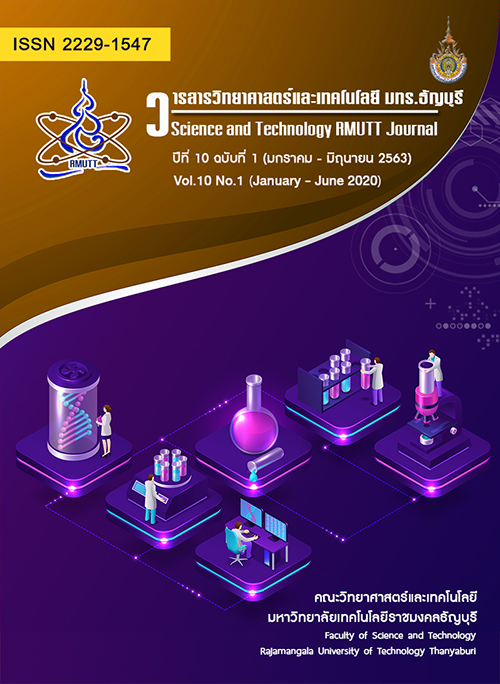New Augmented Reality (AR) Media for Food Safety Perception
Main Article Content
Abstract
The objectives of this study are to create awareness and knowledge about food safety, create awareness of risk factors that can lead to illness or injury due to food and food products to consumers, create knowledge for consumers to prevent and reduce the impact on food and food products which are safe from chemical pathogens and others and to be a channel for dissemination of researches in the Food Safety Project of ARDA. In order to conduct this research study, there are 5 steps of activities which are collecting knowledge and research related to Food Safety, develop an application for Smart phone to support AR technology (Augmented Reality), develop a system maintenance of the database (Back Office) to support AR scans or appropriate technology and import data on food safety, food safety, test and publish the application and promote the application. As the results of the research, an application Food Safety AR is a presentation of information about food safety through Augmented Reality (AR) Technology by using a Smartphone(both iOS and android) to scan relevant image that have been defined to present information in various ways which include 105 Infographics and 10 VDO animations. Yet, another result is Information about the location of the safe restaurants which received the Q-mark from the National Bureau of Agricultural Commodity and Food Standards (ACFS) and Clean Food Good Taste GOLD from the Department of Health.
Article Details
References
Morris Potter. Food consumption and disease risk Consumer pathogen interactions. Woodhead Publishing Limited. 2016: 9-23, 55-70.
Alexandru Mihai Grumezescu and Alina Maria Holban. Food Safety and Preservation Modern Biological Approach to Improving Consumer Health. Academic Press: 4.
Consultancy.uk. The eight essential emerging technologies for executives, [Online]. Available: www.consultancy.uk/
news/12960/the-eight-essential-emerging-technologies-for-executives. 2017. [Retrieved 3 January 2017].
Leanne W.S. Loijens. Augmented reality for food marketers and consumers. Wageningen Academic Publishers the Netherlands. 2017: 14.
Donna R. Berryman. Augmented Reality: A review. Medical Reference Services Quarterly. Published online: 04 May 2012.
Leanne W.S. Loijens. Augmented reality for food marketers and consumers. Wageningen Academic Publishers the Netherlands. 2017: 80
Tony Liao. Augmented or admented reality? The influence of marketing on augmented reality technologies. Information, Communication & Society. 2015: 18:3, 310-326. DOI: 10.1080/1369118X.2014.989252.
Michael E.Porter and James E. Heppelmann. Why Every Organization Needs an Augmented Reality Strategy. Harvard Business Review’s ten must reads on AI, analytics, and the new machine age. 2019: 53-54.
S. K. Ong, M. L. Yuan & A. Y. C. Nee. Augmented reality applications in manufacturing: a survey. International Journal of Production Research. 2008: 46:10. 2707-2742, DOI: 10.1080/00207540601064773.
Michael E.Porter and James E. Heppelmann. Why Every Organization Needs an Augmented Reality Strategy. Harvard Business Review’s ten must reads on AI, analytics, and the new machine age. 2019: 59.
Dennis E. Beck, Philip G. Crandall, Corliss A. o’Brayan&Jessica. An augmented reality solution. Journal of Foodservice Business Research. Volume 19. 2016. issue 4.
Vignali Giuseppe, Bertolini Massimo, Bottani Eleonora, Di Donato Luciano, Ferraro Alessandra, Log Francesco. International Journal of Food Engineering. Feb 2018. Vol. 14 Issue 2. p1-1. 1p.
Morten Fjeld. Introduction: Augmented Reality-Usability and Collaborative Aspects. International Journal of Human–Computer Interaction. 2003: 16:3, 387-393. DOI: 10.1207/S15327590IJHC1603_1.
Frost & Sullivan. Food Safety in APAC Technology To Create Transparency and Traceability. Asia Pacific FOOD Industry. April/May 2019: 24-39.


